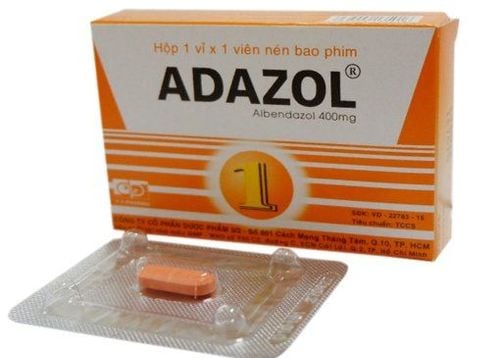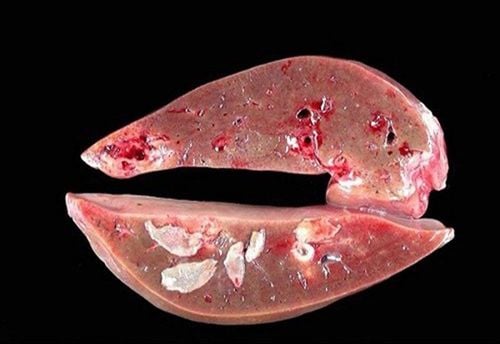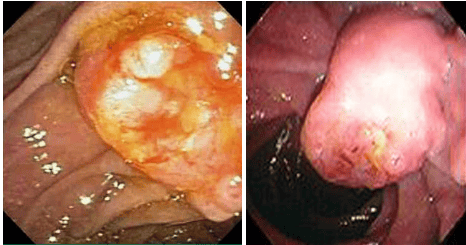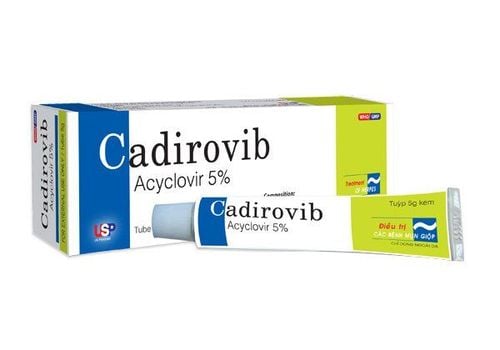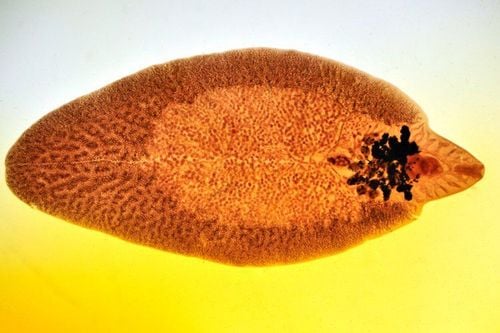This is an automatically translated article.
The article was written by MSc Tran Thi Vuong - Doctor of Microbiology - Laboratory Department - Vinmec Hai Phong International General Hospital.Small liver flukes are parasites and cause disease in humans. They enter from the digestive tract and can spread to many other organs in the body including the brain in extremely large numbers. Fresh screening is a method of diagnosing small liver flukes, but the sensitivity is not high, so doctors will prescribe many additional methods to diagnose, treat and monitor the disease.
1. Biological characteristics
Small liver fluke is a leaf-shaped parasite, thin and flattened, light red in color. The adult fluke is about 10-12 mm long, 3-5 mm wide, with two suckers. An anterior suction mouth, communicating with the gastrointestinal tract, is about 600 micrometers (μm) in diameter, and the posterior one (bulging mouth) is about 500 micrometers (μm) in diameter. The alimentary canal runs along both sides of the body of the fluke and is a blocked tube, not connected to each other. When alive, the liver fluke is transparent, the internal components are clearly visible, the head has a cupped mouth. The eggs are small, about 30 micrometers, yellow-brown in color and have a small cap at one pole. The common disease-causing small liver fluke in our country is called Clonorchis sinensis.2. Life cycle of small liver fluke
The fluke cycle is quite complicated, to complete the development cycle, the fluke must go through many different intermediate hosts. There are 3 hosts: snail, fish, human.People infected with tapeworms when eating fish salad, eating undercooked fish or living in an area where there is a custom of eating fish salad with tapeworm larvae. Humans (or animals) eat fish with undercooked cyst larvae, then after eating, these larvae enter the stomach, duodenum and then back up the biliary tract to the liver, developing into adult liver flukes. and cause disease in the biliary tract. The time from ingesting cyst larvae in fish to adult flukes takes about 26 days. Small liver fluke eggs are excreted in human feces into the outside environment. Encountered in the aquatic environment, the eggs hatch into parasitic hairy larvae in snails. The hairy larvae develop into tailed larvae, leave the snail and go to the fish parasite. Humans and other animals that eat fish containing small liver fluke larvae that have not been thoroughly processed become new and infected hosts, of which humans are the main host. The development and pathogenic cycle of the liver fluke continues to repeat and form a closed cycle.
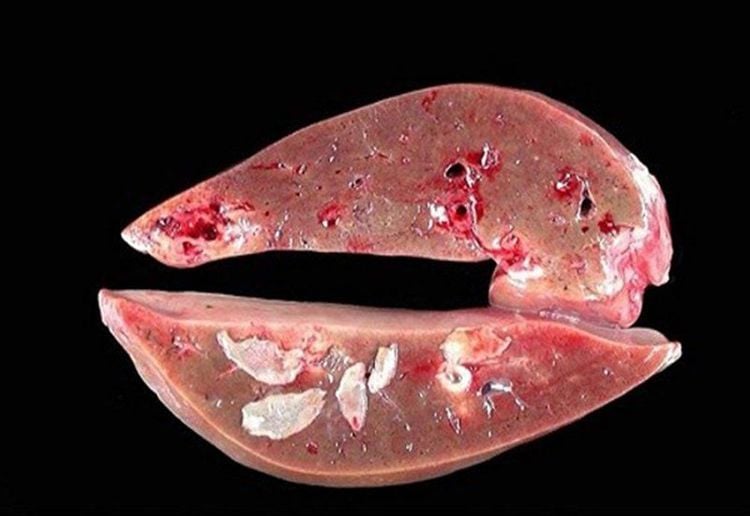
3. Small liver fluke disease and clinical manifestations
Small liver fluke is a parasite that causes disease in humans when it penetrates through the gastrointestinal tract and spreads to many different organs in the body with the number up to thousands. In the natural environment, small liver flukes parasitize other animals in the aquatic environment such as snails, fish... Small liver flukes are found in many parts of the world, especially in Vietnam they cause disease. much in the Northern provinces.Clinical symptoms of fascioliasis depend on the intensity of infection and host response.
In the case of small infections, sometimes there are no special symptoms. With cases of infection with more than 100 flukes, symptoms appear clearly.
Path of entry: through eating Risk factors: omnivores eat fish salad. The onset stage: patients often have stomach and intestinal disorders, anorexia, indigestion, nausea, dull pain in the anal area, diarrhea and unusual constipation. During this stage, there may be a rash, a rash, and a sudden increase in eosinophils. Full-blown stage: When the disease progresses to this stage, clinical manifestations also appear more diverse and severe. Patients have to face pain at a higher level, appear jaundice, yellow eyes, biliary obstruction, anemia, edema. Systemic symptoms such as weakness, erratic fever, and weight loss may also be associated if complications of bacterial biliary tract infection are present. The most serious complications that small liver flukes can cause are cholangiocarcinoma and cirrhosis of the liver.

4. Diagnosis of small liver fluke by what test?
There are many methods to look for the presence of small liver flukes, the most common include the following:Fresh stool smear: this is a simple method and can be performed in many different health facilities . The patient is asked to collect a stool sample continuously for at least 3 days to bring for a fresh scan to look for small liver fluke eggs. Taking multiple samples increases the likelihood of detecting small liver fluke eggs. However, the sensitivity of the stool smear test for eggs is not high. The sampling and preservation of samples should be carried out in accordance with the procedures, following the reproductive cycle of small liver flukes and the time of keeping stool samples should not exceed 4 hours. Fresh scintigraphy of bile or duodenal fluid: less indicated because of difficulty in sampling but higher detection rate. The patient was conducted endoscopy to take duodenal fluid, bile to look for fresh eggs of small liver flukes or adult flukes. Blood test: this is a test aimed at detecting antibodies against small liver flukes produced by the patient's body, based on ELISA method. There are two main types of antibodies: IgM antibodies, which appear early after the fluke enter and cause disease, suggest an acute infection, and IgG antibodies that appear later and persist for a long time should indicate an acute infection. chronic infection. The specificity and sensitivity of this method is quite high, above 85%, but it is not the gold standard for disease diagnosis. In addition, imaging methods such as abdominal ultrasound, computed tomography of the abdomen, skull, and cholangiography also play a role in the diagnosis of the disease with images of cysts, even cysts. lice mature in organizations.
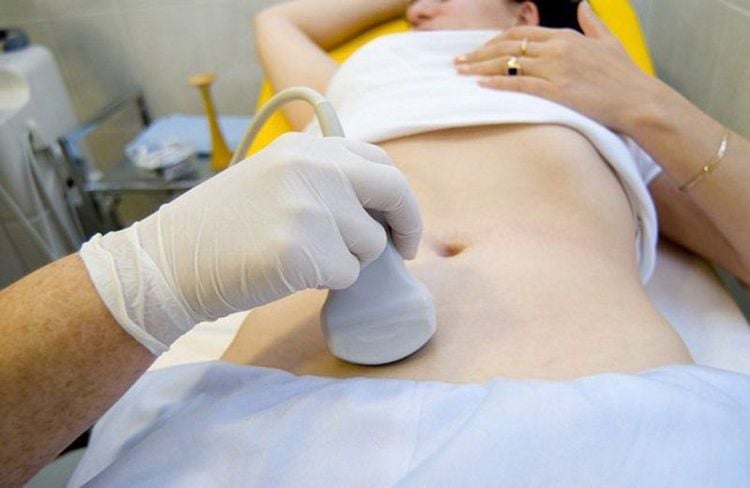
5. Prevention of small liver fluke disease
Small liver fluke is an infectious disease that can cause serious complications if the fluke spreads and causes disease in the central nervous system such as the brain. Small liver fluke control has been included in the National Helminth Control program. Small liver fluke disease is a disease that can be effectively prevented if the following measures are well taken:Practice eating cooked and drinking boiling water, do not eat raw foods, especially fish and shellfish. snails. The source of water used in daily life must be clean and disinfected according to the correct process. Form the habit of washing hands before eating and after using the toilet. Human waste needs to be collected and treated systematically.

Vinmec International General Hospital has performed tests in the examination and diagnosis of many diseases. The testing process at Vinmec is carried out methodically and in accordance with the process standards by a team of highly qualified medical professionals, modern machinery system, thus giving accurate results, making a significant contribution to the identification. diagnosis and stage of the disease.
Please dial HOTLINE for more information or register for an appointment HERE. Download MyVinmec app to make appointments faster and to manage your bookings easily.





